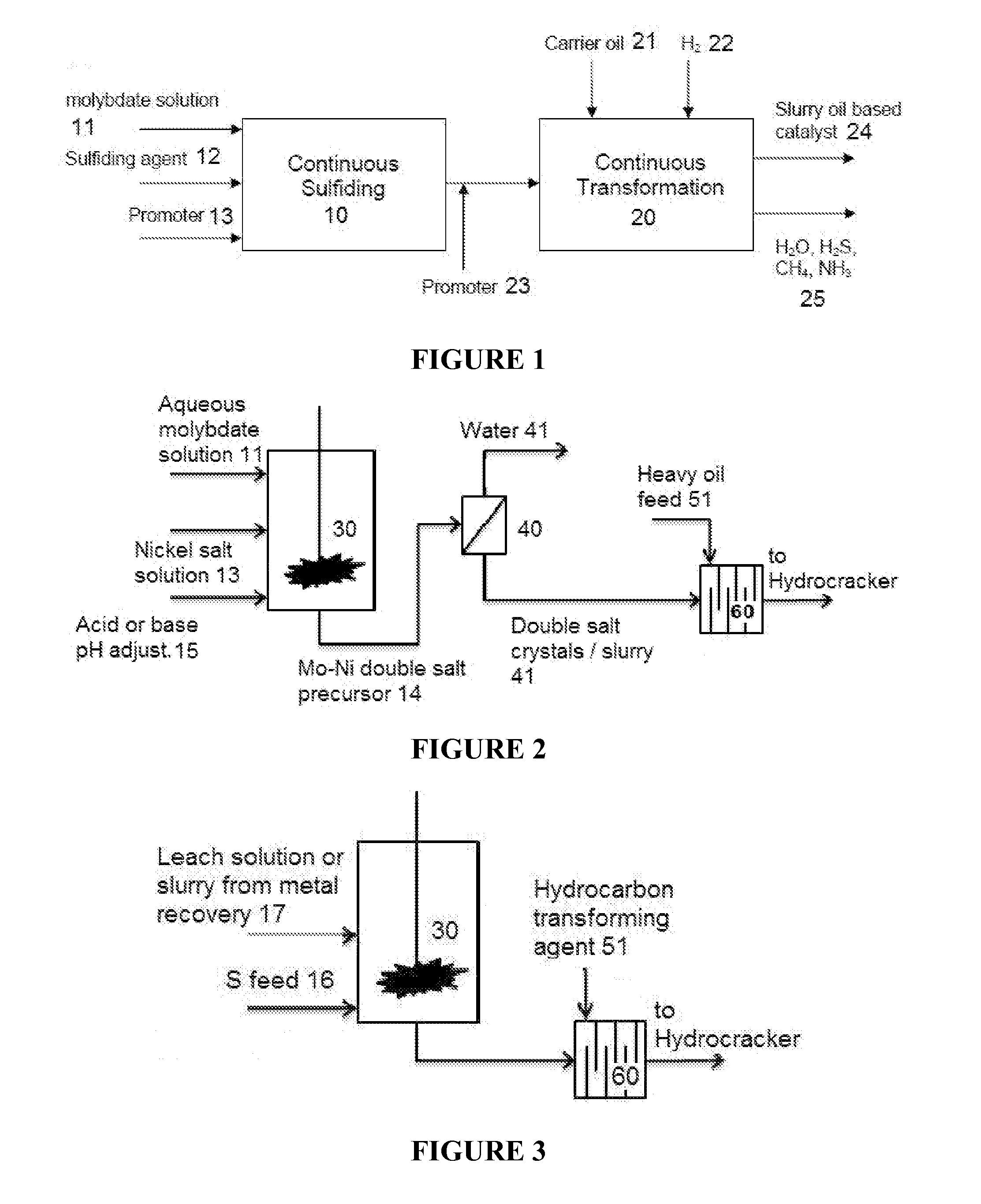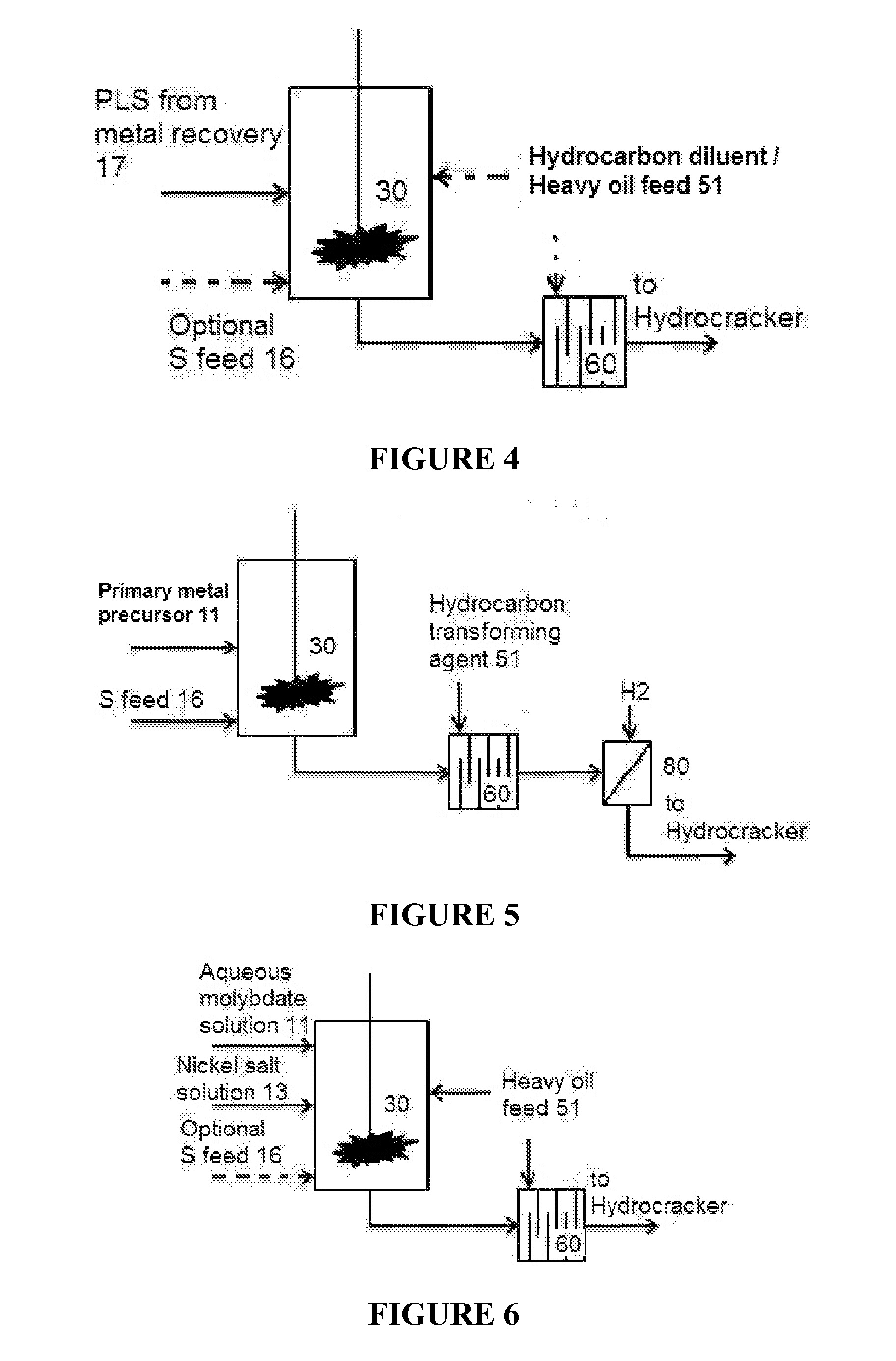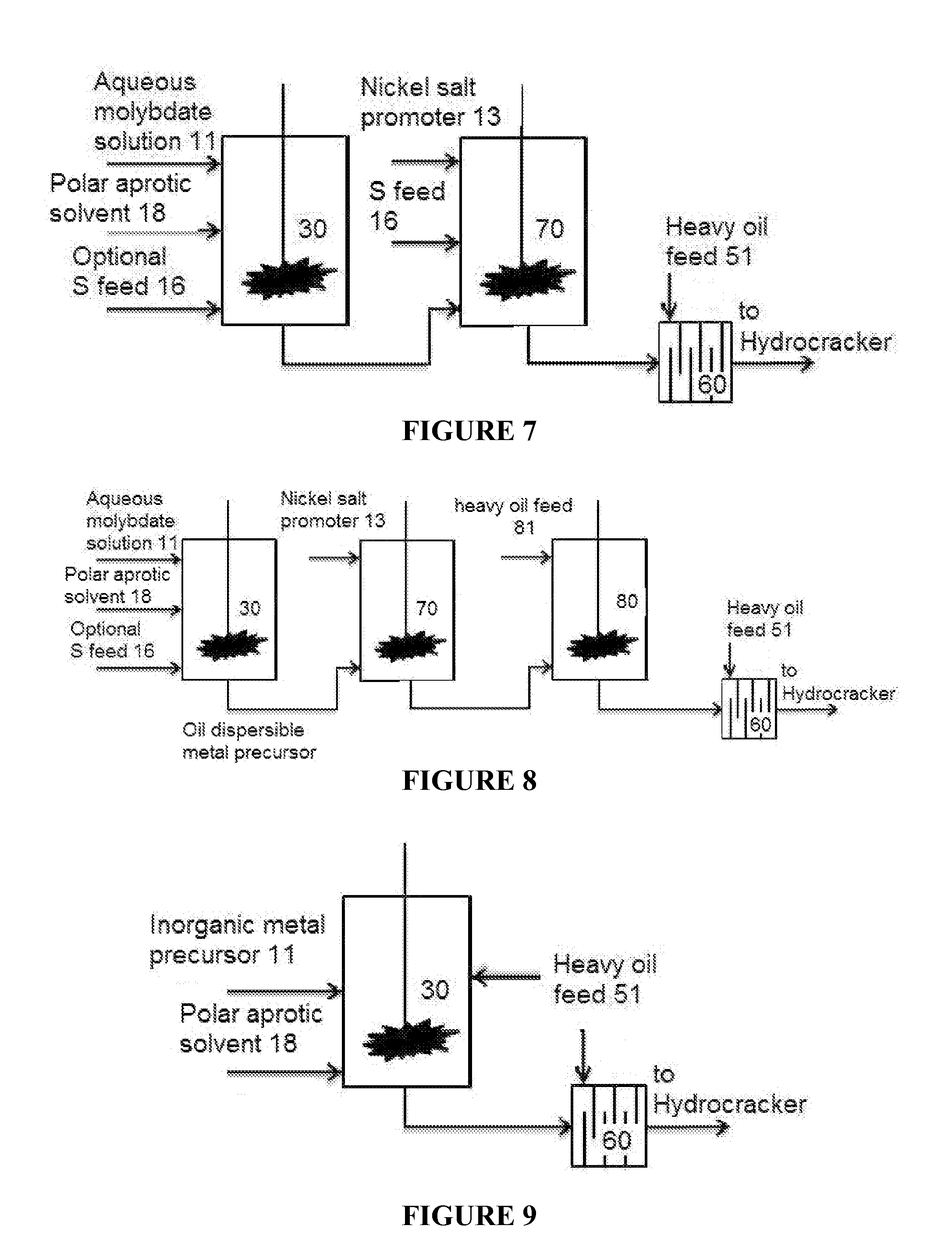Hydroprocessing catalysts and methods for making thereof
a technology of hydroprocessing catalysts and catalysts, applied in the field of catalysts, can solve the problems of requiring a considerable amount of upgrading, and achieve the effect of enhancing the precursor of sulfided catalysts
- Summary
- Abstract
- Description
- Claims
- Application Information
AI Technical Summary
Benefits of technology
Problems solved by technology
Method used
Image
Examples
example 4
[0196]5.63 g of ammonium dimolybdate solution (12 wt. % Mo) was mixed with 0.84 g of nickel sulfate solution (8 wt. % Ni), yielding a double salt metal precursor in solution. A sufficient amount of the double salt precursor was mixed with 112.5 g of heavy oil feedstock (VR#1 mixed with cycle oil at a wt. ratio of 60:40) for a concentration of 1 wt. % Mo (Mo metal as a wt % of VR#1) in a 1 L batch hydrocracking unit. The cycle oil is a HCO:MCO blend at a ratio of 1:1. X-ray diffraction pattern shows that the Mo—Ni double salt is composed of highly crystallized hydrogen ammonium molybdenum nickel oxide hydrate H6(NH4)4Mo6NiO24*4H2O.
example 5
[0197]Example 4 was repeated except that a sufficient amount of elemental sulfur was added to the in a 1 L batch hydrocracking unit containing heavy oil feedstock and double salt metal precursor mixture, for a molar ratio of S to Mo of 3:1.
example 6
[0198]Batch hydrocracking tests were carried out to compare the catalyst made in Comparative Example 1A with the catalysts of Examples 4-5. Sufficient amounts of the catalysts were added to separate batch units containing 112.5 g of 60:40 VR#1 to MCO for a final concentration of 1 wt. % Mo. The three batch hydrocracking units were tested under hydroprocessing conditions of 805° F. temperature, 1600 psig hydrogen pressure, and for 2 hours reaction time. Results are presented in Table 1, showing that Example 4 with double salt metal precursor feedstock showed better catalytic performance and spent catalyst properties, suggesting that nickel promotion has improved, and a low temperature sulfur source for sulfiding would improve vanadium removal.
TABLE 1Catalyst% HDN% HDS% HDMCRComp. Ex 1A32.4465.2452.82Example 1329.2566.2048.93Example 1441.0574.5852.14
PUM
| Property | Measurement | Unit |
|---|---|---|
| droplet sizes | aaaaa | aaaaa |
| pressure | aaaaa | aaaaa |
| temperature | aaaaa | aaaaa |
Abstract
Description
Claims
Application Information
 Login to View More
Login to View More - R&D
- Intellectual Property
- Life Sciences
- Materials
- Tech Scout
- Unparalleled Data Quality
- Higher Quality Content
- 60% Fewer Hallucinations
Browse by: Latest US Patents, China's latest patents, Technical Efficacy Thesaurus, Application Domain, Technology Topic, Popular Technical Reports.
© 2025 PatSnap. All rights reserved.Legal|Privacy policy|Modern Slavery Act Transparency Statement|Sitemap|About US| Contact US: help@patsnap.com



